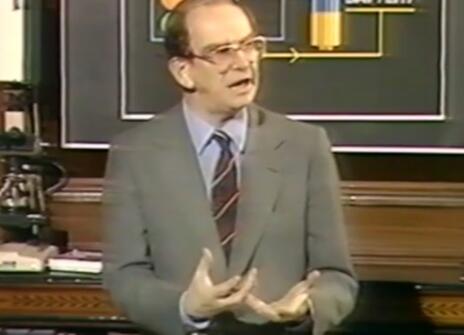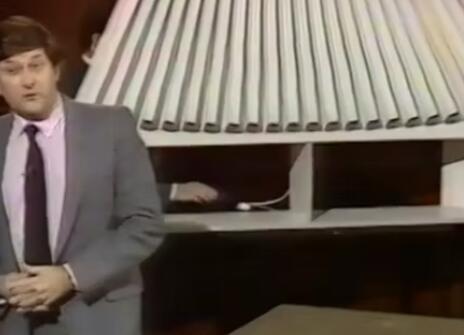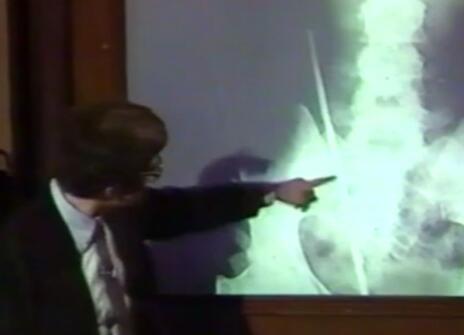Lecture 2 – The architecture of crystals
In this second lecture, John Meurig Thomas presents the vast variety of molecule arrangements within crystals. By using physical models and computer software to reproduce the complex architecture of crystals and proteins he demonstrates the link between architecture and function.
He goes on to explain how by accelerating and bombarding crystals with electrons or light, scientists are able to obtain diffraction patterns providing them with information to reconstruct the position of the molecules within the crystals.
With the help of his student and a member of the audience, he uses an X-ray machine live at the Royal Institution to create a diffraction pattern for the pigment Egyptian Blue. Follow up analysis reveals the constituents of the pigment based on the pattern generated.
About the 1987 CHRISTMAS LECTURES
From the 1987 lecture programme:
"Crystals first appeared on earth many millions of years before the emergence of life. The first laser, however, based on a man-made crystal of ruby, was fashioned less than thirty years ago. Nowadays, crystals and lasers play crucial roles in the design of new materials, in the expanding world of communications, in medicine and environmental science and in the quest for better, cleaner forms of energy. They also function as the picot for a wide range of fundamental scientific studies."
In this series of six CHRISTMAS LECTURES, Professors John Meurig Thomas and David Phillips explore the science and applications of crystals and lasers, reviving some of the key experiments from the history and evolution of physical sciences and exploring what the future might bring.




